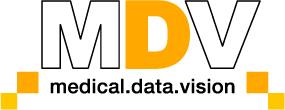
Age and Gender Distribution of Hyperuricemia and Gout Patients, and Trends in Anti-Gout Drug Us
At the 58th Annual Meeting of the Japanese Society of Gout and Nucleic Acid Metabolism, held in February 2025, a guideline session introduced a draft of the upcoming revised “Guidelines for the Treatment of Hyperuricemia and Gout (4th Edition)” scheduled for publication next year.
The draft outlines key clinical questions (CQs) regarding crucial treatment considerations, including:
- Drug selection
- Prevention of complications
- Treatment discontinuation
- Patient background
- Strict disease management
Particularly in the area of complication prevention, recent studies have been published, and these findings will be carefully reviewed before being incorporated into the final CQs.
Understanding Hyperuricemia and Gout
Hyperuricemia is a condition where uric acid accumulates excessively in the body. Since it is often asymptomatic, it tends to be overlooked. A serum uric acid level of 7 mg/dL or higher is considered hyperuricemia, and treatment is recommended when levels reach 9 mg/dL or above, or 8 mg/dL or above if complications are present. If uric acid crystallizes, it can accumulate in joints and the kidneys, leading to gout attacks, kidney dysfunction, or urinary tract stones.
Gout is a form of acute arthritis caused by uric acid crystals accumulating in joints, resulting in severe pain and inflammation—most commonly affecting the base of the big toe. It primarily occurs in men aged 30 to 50. Although the pain subsides within a few days, gout attacks tend to recur unless hyperuricemia is treated. Additionally, hyperuricemia is strongly associated with metabolic syndrome and increases the risk of arteriosclerosis, emphasizing the importance of proper uric acid control.
MDV Data Analysis on Hyperuricemia, Gout, and Anti-Gout Drug Use
Using MDV’s database, we analyzed the age and gender distribution of hyperuricemia and gout patients, along with trends in anti-gout drug prescriptions.
Age and Gender Distribution of Hyperuricemia and Gout Patients
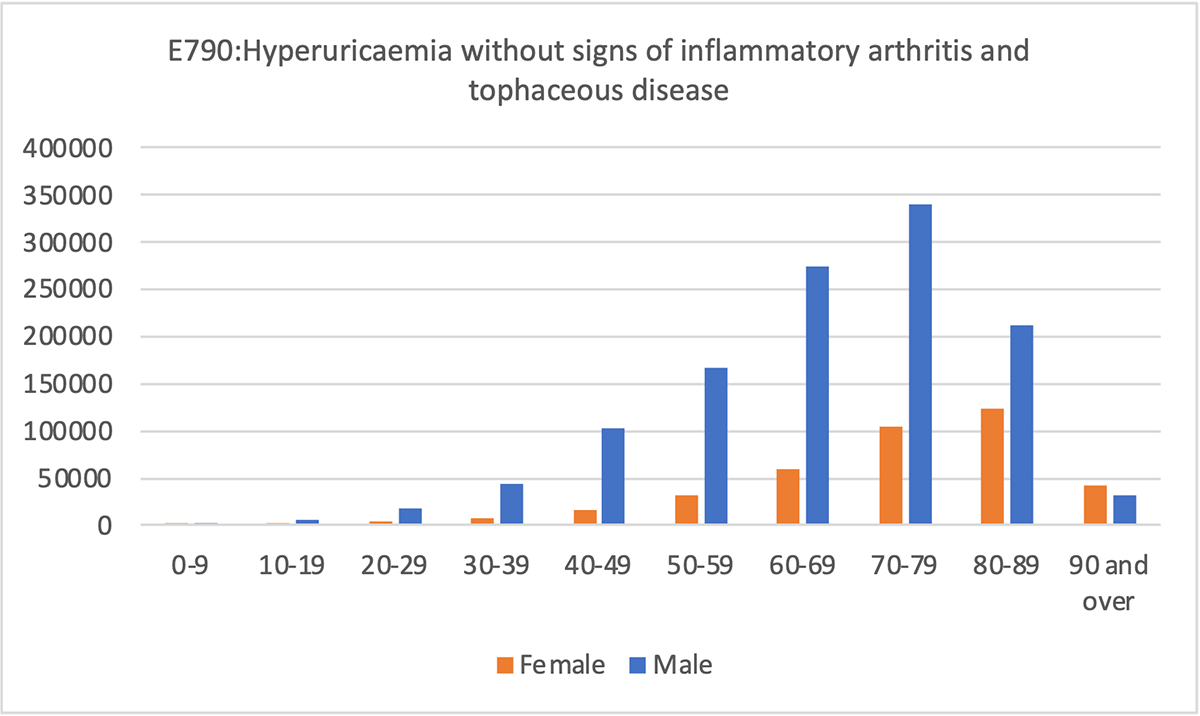
Study period: April 2008 – December 2024
Number of participating medical facilities: 557
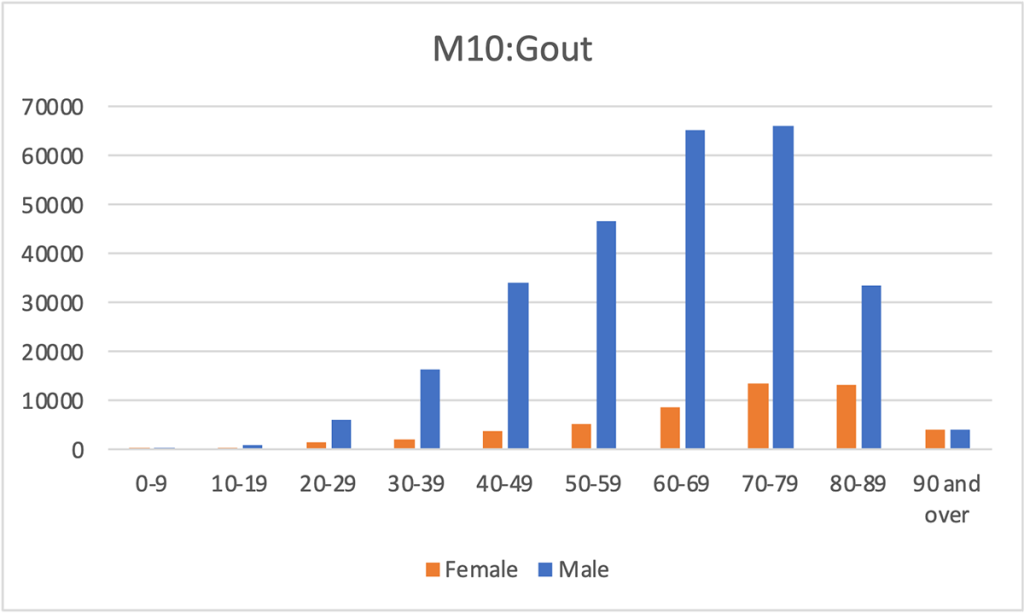
Study period: April 2008 – December 2024
Number of participating medical facilities: 557
Findings indicate that the number of hyperuricemia patients increases sharply after age 40, peaking in the 70–79 age group, and then slightly declining. Similarly, gout cases rise after age 40, peaking in the 60–79 age group before significantly decreasing at age 80 and beyond.
Regarding gender differences, both conditions are far more prevalent in men. Gout, in particular, is overwhelmingly more common in males. While the number of female patients increases with age, the rate of increase is much lower compared to men.
Trends in Anti-Gout Drug Use
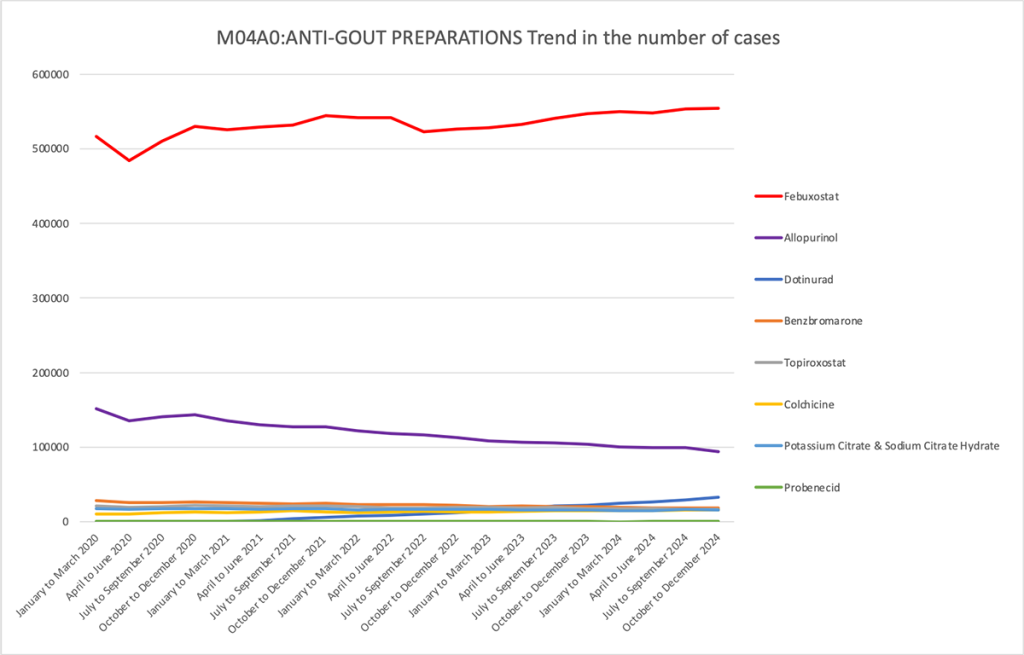
Data Period: April 2019 to March 2025
Only hospitals with complete data for the specified months
Number of Facilities Meeting Base Criteria: 363
Target Diseases: A020: Salmonella enteritis, A050: Staphylococcal food poisoning, A051: Botulism , A052: Clostridium perfringens food poisoning, A053: Vibrio parahaemolyticus food poisoning, A054: Bacillus cereus food poisoning, A058: Other specified bacterial food poisoning, A059: Bacterial food poisoning, unspecified
Among prescribed anti-gout medications, Febuxostat is the most frequently used, followed by Allopurinol, although the latter’s use is declining. The decline in Allopurinol prescriptions may be due to its dose adjustment requirements or contraindications in patients with impaired kidney function. In contrast, Febuxostat is less influenced by the renal function, which may explain its increasing usage.
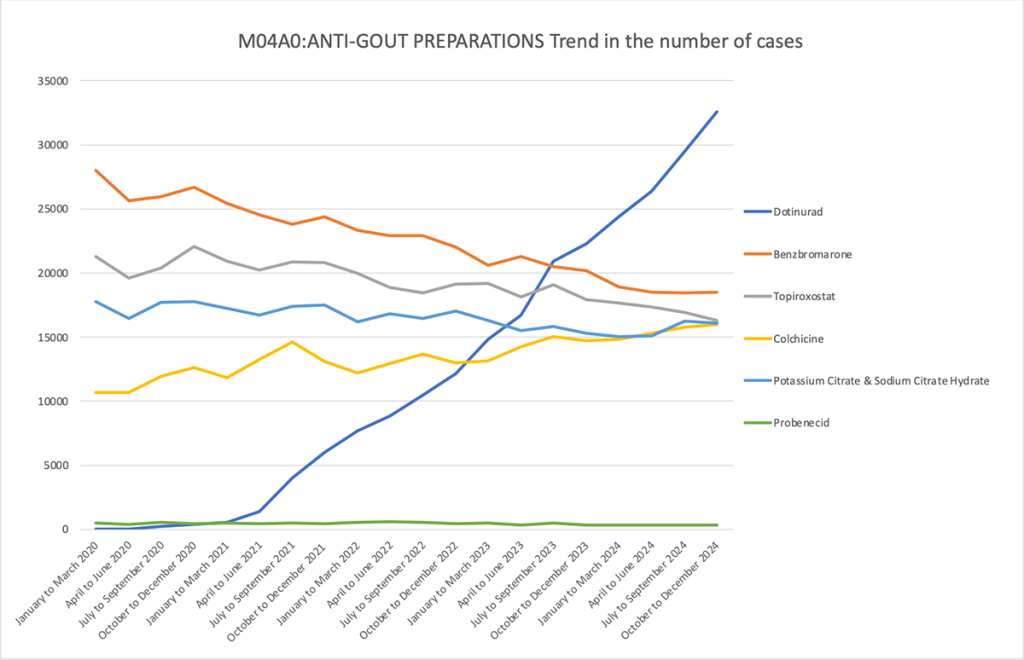
Study period: January 2020 – December 2024
Number of participating medical facilities: 342 (hospitals with complete data for the specified period)
Additionally, excluding the top two medications, the new drug Dotinurad, approved in 2020, has seen a rise in prescriptions since 2021.
Note: This article was published on April 1, 2025.
Data survey and analysis tailored to your specific requests
Databases, data analysis requests, and more.
© Medical Data Vision Co., Ltd. All Rights Reserved.

